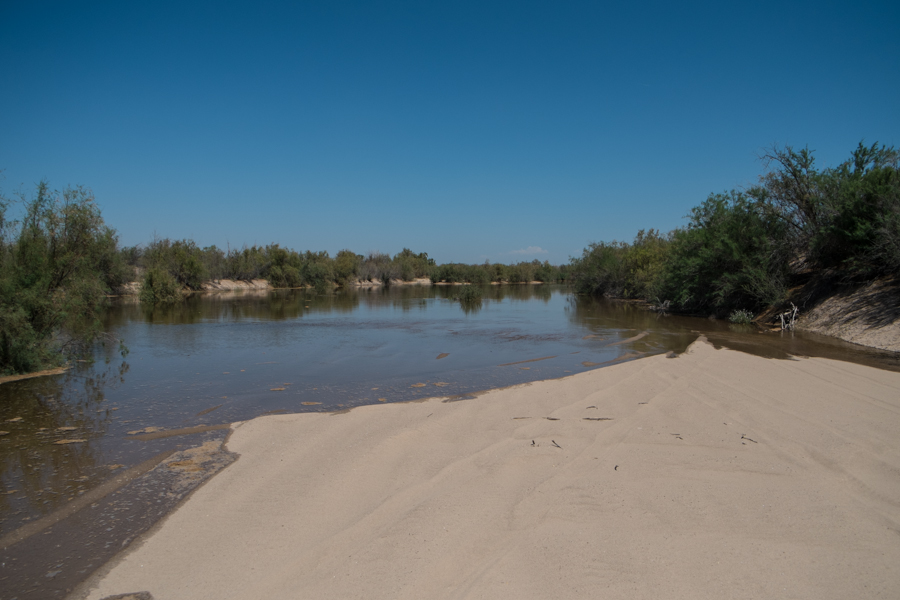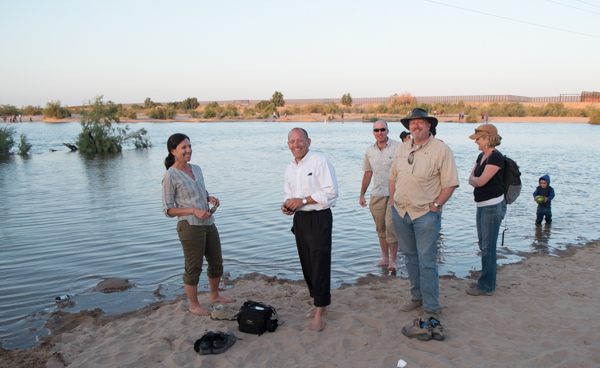Folks working on the current Colorado River “pulse flow” must fight against the deeply held perception that the river in Mexico’s Colorado River delta is “dead.” Blame Phillip Fradkin, whose 1981 book “River No More” is one of those touchstones in the regional literature that dominates public understanding, even if it isn’t quite right. Writing in the Journal of Arid Environments in a 2001 special issue on the potential for delta restoration, Mike Cohen of the Pacific Institute wrote this:
[D]espite reports that the delta was a dead ecosystem where the Colorado River no longer reached the sea (Fradkin, 1981), agricultural drainage and the occasional space-building releases of Colorado River water from upstream reservoirs have prompted significant new growth of valuable native riparian and emergent wetland habitat, sup- porting the largest and most critical arid wetland in North America and sustaining avian and aquatic species of concern (Glenn et al., 1992, 1996; Luecke et al., 1999). Flood releases have also been strongly correlated with a rise in the shrimp catch in the Upper Gulf (Galindo-Bect et al., 2000), an indication of the renewed viability of an important estuary.
The Fradkin meme has made the political side of restoration efforts harder, because of the perception that the delta had already been lost. In fact, those ag return flows and high water tables from irrigation have kept some stretches within the levees through the Mexican delta wet. Jennifer Pitt of the Environmental Defense Fund makes that point in a post yesterday documenting her pulse flow river-chasing adventures:
These releases – lasting eight weeks – are being made from Morelos Dam, about 100 miles (160 kilometers) upstream from the river’s end at the Upper Gulf of California (Sea of Cortez). About 75 of those river miles (120 kilometers) are typically wet, either from a high groundwater table or the tides that make their way upstream. But a reach of about 25 miles of the channel have been dry for decades, hot sand baking in the desert sun.
Be sure to check out Pitt’s fun videos, where she seems to have strapped on a GoPro while tromping through the delta. Here’s a picture I took when I bumped into Jennifer, Mike and friends last week at the endless river party at San Luis Río Colorado, grinning. Really, a lot of grinning was involved in this whole thing.



Nicely stated.
Of possible relevance, in the Atacama desert in South America, plant seeds and even fish eggs survive for 50 or more years down in the sand or dried mud only to give birth to a transient but thriving ecosystem when the rains come. The ecosystem is active for a few weeks to a month, creates more seeds and eggs, and then goes dormant again for decades.
Eric – Thanks for the comment. According to the biologists I interviewed while I was down there last week, some of the key riparian species, for example cottonwoods, do not do this. The seeds only last a year, and depend generally on falling onto flowing water – spring pulse flows – to spread and then germinate when they’re deposited on wet ground as the water recedes.